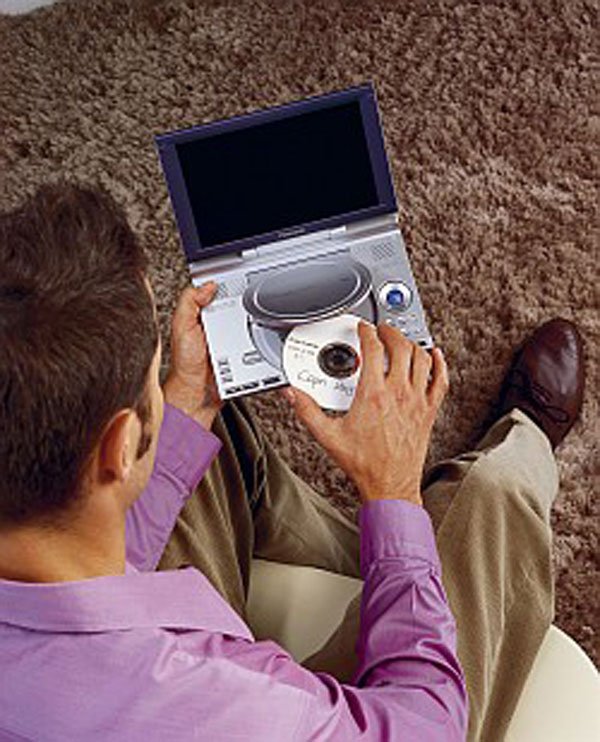Step into the local Best Buy and you’re assaulted with such a
vast selection of televisions it’s almost paralyzing. Stand near
the door long enough and you’ll see a pattern: Men who get the look
of children on Christmas morning dragging their wives (eyes wide
and mouths agape in horror) toward the endless rows of televisions
and peripheral equipment.
Step into the local Best Buy and you’re assaulted with such a vast selection of televisions it’s almost paralyzing. Stand near the door long enough and you’ll see a pattern: Men who get the look of children on Christmas morning dragging their wives (eyes wide and mouths agape in horror) toward the endless rows of televisions and peripheral equipment.
There they’ll linger for an hour … okay, two hours … maybe just 15 minutes more? But over time, the men become slowly more pensive as their initial glee turns to confusion. One must make the right choice in order to claim supreme bragging rights in the home entertainment arena. Plasma, LCD, rear-projection, direct view – it’s all too much to pretend to comprehend.
In the interests of getting you in and out of the electronics store with something more worthwhile than a sense of longing, glance over our TV/DVD cheat sheet before your next big outing.
Flat panel TVs
A few years ago, flat-panel televisions were an ostentatious show of wealth – beautiful, slim and exotic – but these days they’re a growing share of the market. These skinny televisions can be mounted just about anywhere from the mantle to the ceiling, and their aesthetic appeal is undeniable. But turn one on and a whole other story emerges.
Plasma screens, while touting impressive contrast ratios in theater-like settings, fade like shrinking violets when sunlight enters the room. They’re also particularly susceptible to burn-in (when a frequently shown object such as a stock ticker or station logo becomes permanently burned into the screen) and streaking, which occurs when the projection device cannot keep up with the speed of action on screen.
LCD (liquid-crystal displays) may be a better bet than plasma in the big-screen category as they are brighter and thus more able to resist the fading effect in harsher sunlight. Their life span is also far greater than a plasma screen’s, averaging 50,000 hours of usage before they fade by half versus the 20,000 to 30,000 hours promised by plasma screens.
Unfortunately, their price is a major deterrent (30-odd inches of screen space in LCD terms will buy you 40-odd inches of plasma, for units with list prices ranging as high as $10,000).
Plasma and LCD also share some problems. Neither one is capable of producing the deep, saturated blacks of traditional tube-based televisions. Also, while quite a few models of both varieties claim to be HDTV-capable, the technology simply does not bear that out. True, they will likely be more clear (when properly set up) than your old Zenith, but their picture density lacks the number of pixels to be considered high definition. Instead, most plasma and LCD sets are actually EDTV, or enhanced definition, products.
HDTV
Provided the box’s aesthetic appeal isn’t your main criteria, a tube-based high-definition television unit can’t be beat. Not only do viewers enjoy the densely pixelated clarity of such a screen, but they also get to see more in the frame thanks to richly varied black tones that only a tube can provide so far. Plus, for a sophisticated and long-lasting piece of equipment with no burn-in problems, the price is right. Direct-view big screens start around $1,000. Rear-projection screens, which allow for larger actual screen area, are slightly more expensive but show little difference from their direct-view counterparts.
DVD units
In the DVD department, consumers are finally seeing what, had we been smarter, we would have demanded all along. Who, after all, would buy a VHS player that only played tapes and didn’t actually record them? That’s the question that’s finally been posed to DVD makers, prompting companies like Philips, RCA, GoVideo and others to roll out far more affordable versions of home DVRs, or digital video recorders. Panasonic just released their fifth generation DVD recorder, whose features function almost identically to TIVO, allowing viewers to pause live TV, all for a single purchase price that ranges from $215 to $300. By comparison, Pioneer’s $700 DVD recorder/TIVO combination won’t record programs without commercials or activate the TIVO features unless the company’s monthly subscription fee is paid.
Production is also expanding on portable DVD players that serve a variety of functions and are tough enough to stand up to the kiddos in the back seat. RCA’s tablet-style portable is just $300 and comes complete with a car kit. A harness allows parents to strap the monitor to the back of a headrest and the unit is powered either by a screw-in battery or an adapter that fits into the car’s cigarette lighter. Unfortunately, the unit only has one headphone jack,
so parents with more than one child will have to listen to little Johnny’s Spongebob Squarepants Singalong for the 500th time, too.
Business travelers, on the other hand, can enjoy the luxury of Panasonic’s swivel-screened LS50 for around $350. It’s a bit more delicate, but much lighter and has higher resolution than the RCA. Also, the notebook design allows viewers to place the seven-inch screen at their optimum position rather than trying to balance a tablet-style player on their lap. Either way, though, the movie had best be short. Average battery life is just two and a half hours.
Bottom line, we’ve probably only added to your Christmas list. And ladies, we’re sorry about it … really.













